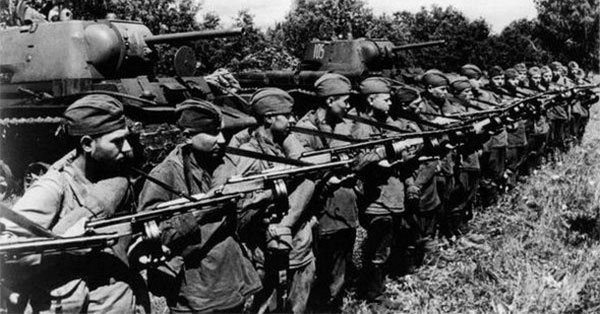World War II still holds the ominous distinction of being the deadliest conflict in human history, with official estimates placing the overall death toll anywhere from 60-80 million losses worldwide. Most of these fatalities stemmed from technological advancements in the tools that men used to wage war. Mid-century small arms could deliver sustained and accurate fire over great distances, explosives were portable and lethal, and new twists on old ideas gave rise to some truly deadly implements of destruction. The following is a list of weapons that drew both the fear and admiration of WWII infantrymen during the Second World War.

Lee-Enfield Rifle
The Lee-Enfield rifle, along with its many variants, was one of the most versatile and dependable weapons of WWII. Based upon the earlier Lee-Metford rifle, the Lee-Enfield was the British Army’s standard service rifle for over 60 years. Beginning its lengthy manufacturing run in 1895, the rifle’s creator, James Paris Lee, oversaw the first several years of production at the Royal Small Arms Factory in Enfield, a small borough in northern London. Lee’s greatest contribution to the firearm industry was his spring-loaded, column-fed, centerfire magazine system, which was a vast improvement over older tubular systems and still featured many modern rifle designs.
Chambered in .303 British, a skilled marksman could typically deliver 20-30 aimed rounds with the Lee-Enfield over the span of one minute. This high-powered rifle cartridge was manufactured in several varieties, including tracer, armor-piercing, and incendiary ammunition. The most popular variant was the 174-grain Mark VII cartridge, which achieved a maximum range of approximately 3,000 yards. The Japanese, in recognizing the soundness of the round, patterned a direct copy of the British cartridge (7.7×56mmR) for use in their rifles and machine guns. Time-tested, the .303 British is one of the few bottle-necked, rimmed centerfire cartridges still in use today.
During WWII, the British produced and refined several versions of the Lee-Enfield. The No. 4 Mk 1 debuted in 1941, being much stronger and easier to manufacture than earlier versions of the weapon. The No. 4 rifle employed a fearsome spike bayonet, which soldiers dubbed the pigsticker. A No. 5 “Jungle Carbine” variant of the Lee-Enfield saw limited use near the end of the war, but was discontinued due to recoil issues. By far, the deadliest model of the Lee-Enfield was the SMLE No. 1 Mk. III (HT), which featured improved ergonomics and a sophisticated telescopic sight.
Three interesting versions of the Lee-Enfield included the Charlton Automatic Rifle, the De Lisle Commando Carbine, and the Howell Automatic Rifle. The Charlton and Howell were similar in design, but filled two very different roles. The Charlton was used as a light machine gun by Aussie and Kiwi allies during the war, while the Howell was employed by the British Home Guard as an antiaircraft weapon. The De Lisle carbine, on the other hand, featured an integrated suppressor, fired lethal subsonic ammunition, and is still one of the quietest combat weapons ever produced. Regardless of configuration, the Lee-Enfield was deadly in battle.

